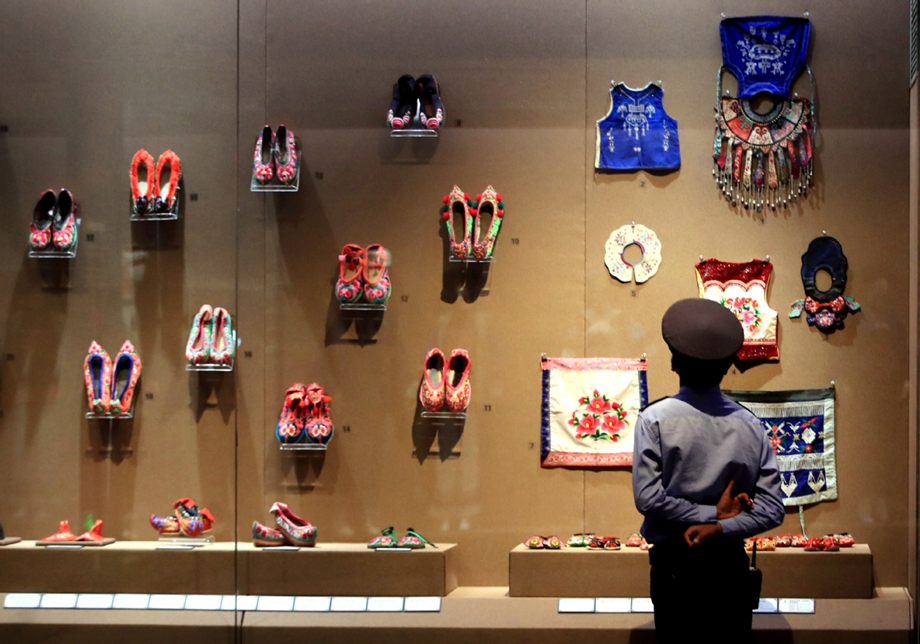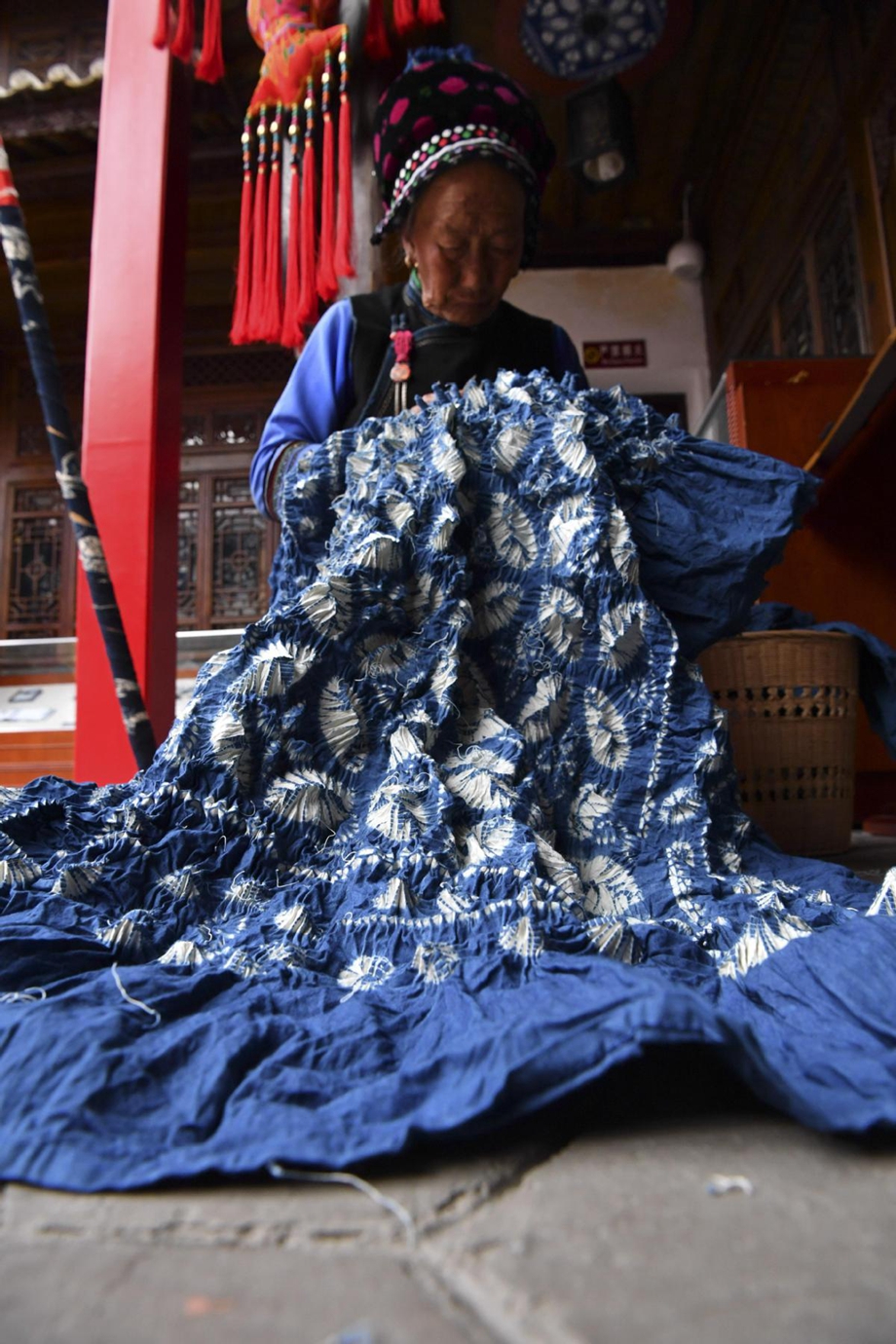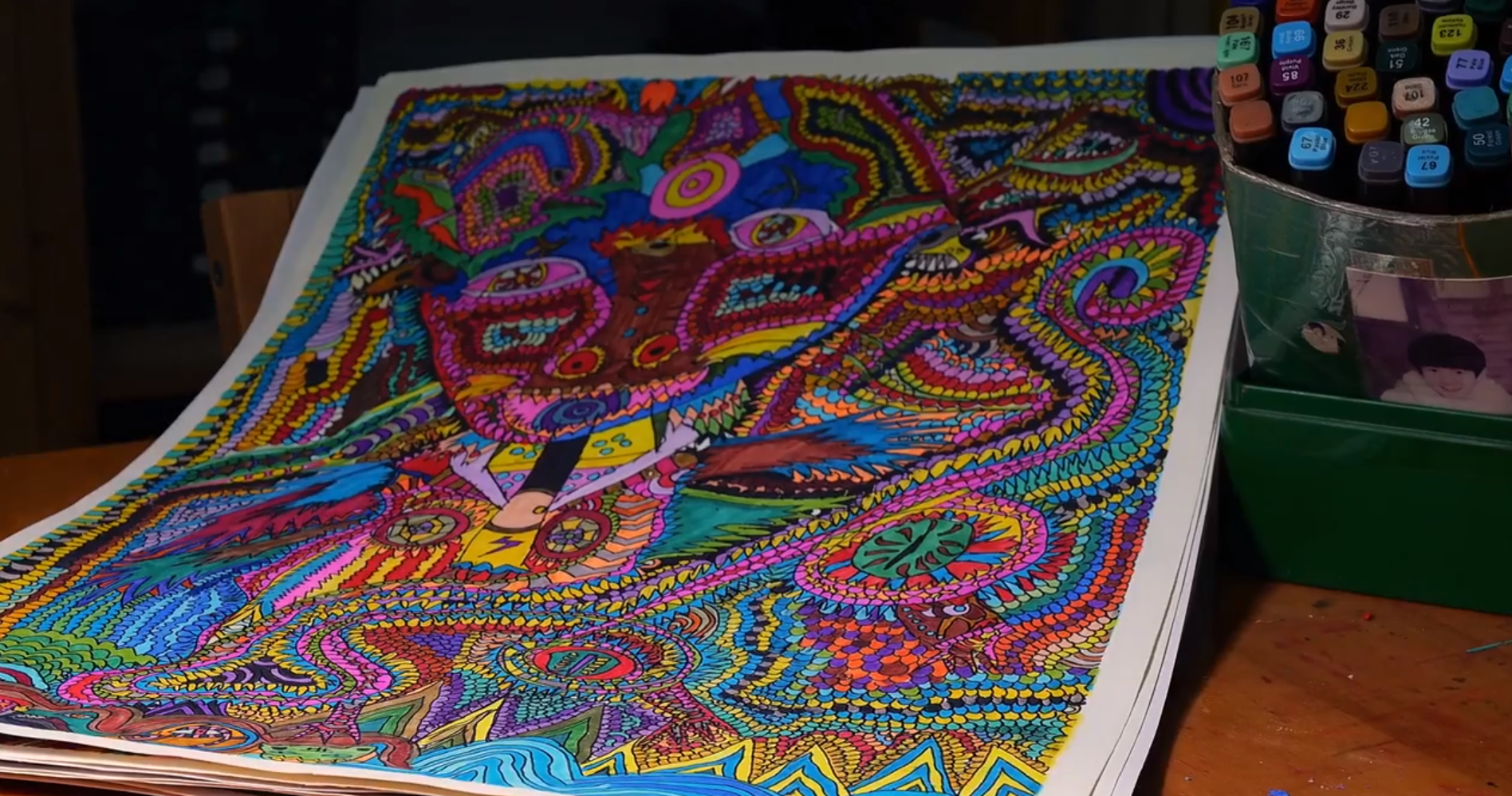
A visitor views traditional handicrafts of the Bai ethnic group on display in an exhibition at the Yunnan Provincial Museum in Kunming, Yunnan province, on June 13, 2020. [Photo by CHEN SHENG/FOR CHINA DAILY]
Buza, a traditional handicraft of China's Bai ethnic group that is often associated with mystic beliefs, has gained new prominence by changing with the times.
The craftwork, made with fabric and thread and stuffed with herbs and spices, usually represents images of the 12 Chinese zodiac animals, Bai folklore, historical figures or other auspicious symbols.
In 2009, buza was listed as an intangible cultural heritage of southwestern China's Yunnan province.
The unique cultural feature of buza is that "each one implies some meaning and every meaning bears an auspicious significance", said 34-year-old Zhang Sidai, who runs a buza store in Jianchuan county in Yunnan's Dali Bai autonomous prefecture.
Committed to passing on the traditional heritage, Zhang also offers classes on making buza in her store.
During the Dragon Boat Festival, children in Jianchuan wear a string of buza on their chests as talismans.
Traditionally, Zhang said, a string of buza consists of three to eight trinkets, including a monkey, an embroidery ball and the Eight Diagrams-symbols used in Taoist cosmology.
However, as the buza strings were expensive to make and only a few people were willing to buy them, they were only sent to market once a year, during the Dragon Boat Festival, said Yang Wantao, curator of a cultural center in Jianchuan.

A craftswoman makes a Bai-style tie-dye cloth in Dali, Yunnan province. [Photo/China News Service]
Zhang, however, saw obstacles as opportunities. She began running a manicure parlor in 2006, and then started learning buza-making techniques from elderly artisans six years later.
Believing that in order to promote the traditional handicraft, it should meet consumers' demands, she initially designed a variety of items, such as cardholders, key chains and brooches that proved popular with young people.
Other small decorative items suitable for cars and bedrooms also garnered a lot of orders.
In 2018, Zhang invested more than 100,000 yuan ($14,300) to open the buza experience store.
"We have expanded both the time of wearing buza and the space of using this traditional handicraft, thus opening a broader market for the craftwork," Zhang said.
In Jianchuan's Xinren village, Yang Yinmei is one of many village women who make buza after completing their farm work. They recently completed a large order for more than 1,000 buza trinkets.
"The price of one piece ranges from less than 100 yuan to over 1,000 yuan, and more than 10 people are engaged with me in crafting buza," Yang said. The handicraft has allowed many villagers to earn extra cash.
In recent years, the government and NGOs arranged buza-making classes for many villagers like Yang so they could shake off poverty and lead better lives.
After receiving feedback that many of her ornaments seemed quite juvenile to adults, Yang developed ornaments that appealed to couples and also made some buza bracelets. "Though tradition should be preserved, at the same time evolution is also necessary to keep the handicraft alive," she said.
Xinhua
|







7740f3b5-9ecb-438e-9052-76cb2d4bb671.jpg)

